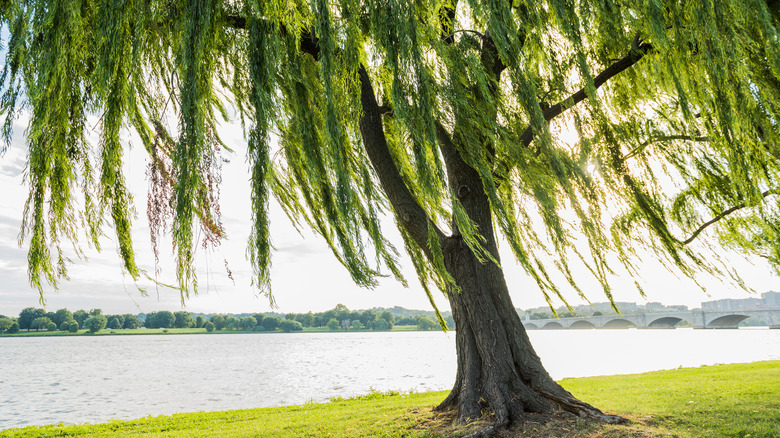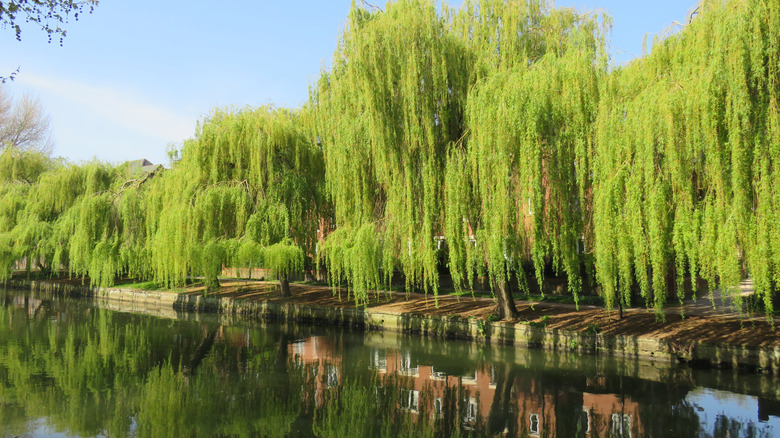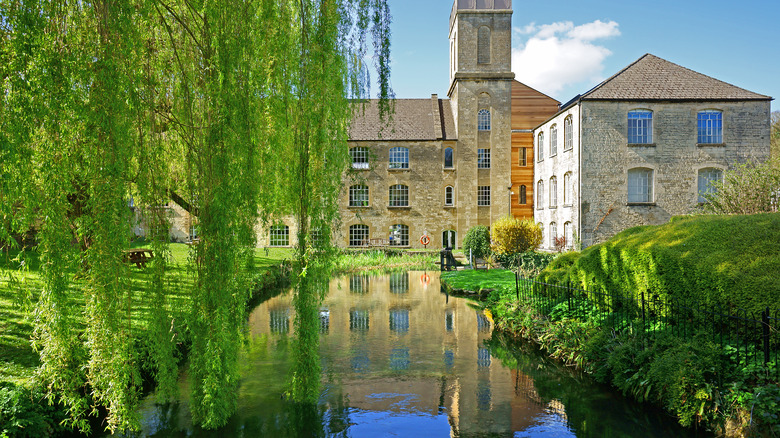Things To Watch Out For If There's A Weeping Willow In Your Yard
An enticing tree to have in your yard, Salix Babylonica, known as the weeping willow tree, is often regarded as whimsical and romantic due to its rounded shape and long, arched branches. Native to China, hybridized versions of the tree made their way to Europe in 1730 through ancient trade routes in southwest Asia and the Middle East, according to Garden Guides. The weeping willow was then brought overseas as colonization spread to North America.
Since then, the willow family has grown exponentially over the last three centuries and now includes 400 different types of willow trees that can be found all over the world. The weeping willow, in particular, is known to grow within the United States Department of Agriculture's Plant Hardiness Zones of six to eight, which includes some northeastern regions of New York and New Jersey, as well as the Mid-Atlantic and a majority of the southeastern portion of the country.
In general, the weeping willow needs full sun and room to grow, and as a result, they often don't thrive in urban or dry environments. When planted in ideal conditions, though, the weeping willow can be an animal and kid-friendly tree that helps with soil erosion and brings plenty of shade and beauty to your yard. However, while there are many upsides to having a weeping willow in your yard, there are also some downsides to the tree that you should keep in mind.
The root of the problem
Often found near freshwater sources like streams and rivers, weeping willows have quite the built-up reputation. Believed to be able to sense water nearby, the trees have long, shallow root systems that can spread up to three times the tree's height and seemingly detect when wet soil is present. If they aren't getting enough water, your weeping willow may just go looking for water in your yard and find some old cracked concrete or metal pipes, according to Bower & Branch.
To keep this from happening, try testing your soil's dampness by sticking your index finger into the dirt near the tree, and if the soil on the top two inches of your finger doesn't feel wet, your tree needs water. You should also make sure your tree has plenty of access to wet soil by planting it in an area that's on a slight decline where runoff water may collect and is at least 50 feet from you and your neighbors' homes, as well as pools, underground pipes, and septic tanks.
If you don't have a weeping willow but are looking to get one, you should also consider testing the pH levels of your soil along with its moisture level, as weeping willows tend to like slightly acidic soils that drain well. To do so, you can use a home pH meter or test strips and should repeat the testing process every time you plant a new crop in your yard (via Growfully).
Weeping willow upkeep
Another thing to keep in mind when it comes to weeping willows is that they can require quite a bit of maintenance. In particular, weeping willows can grow very quickly, often growing three to four feet a year, depending on how rainy the year was. Because of this, they shouldn't be planted in tightly packed neighborhoods as the average property is becoming increasingly smaller. They should also be pruned at a young age as it can be essential to the willow's health and help to establish a central leading branch and encourage new growth (via This Old House).
Considered to be messy trees, weeping willows regularly shed their brittle branches and leaves, especially when the seasons begin to change, but if you notice that your willow has started irregularly shedding, chances are your tree is in some kind of distress. Weeping willows, in particular, can attract more than just hopeless romantics during their short lifetimes as the tree is susceptible to all kinds of insects and diseases.
According to Southern Living, weeping willows often play host to gypsy moths, sawflies, beetles, aphids, and many more pests that can cause irreversible damage to the tree. The willow's attractiveness to harmful insects may also be why the tree suffers from so many diseases, including willow scab and black canker. And while you can briefly deter insects and disease by keeping your weeping willow hydrated and applying fungicide and horticultural oil, your tree likely won't live more than 30 years.


